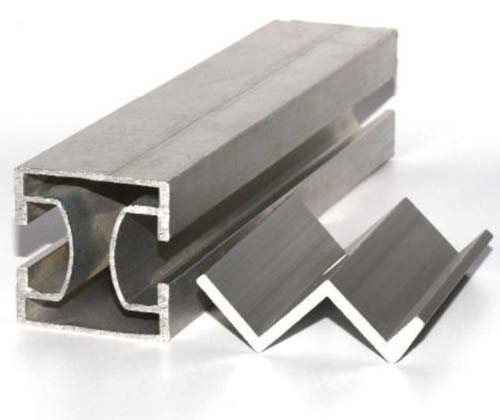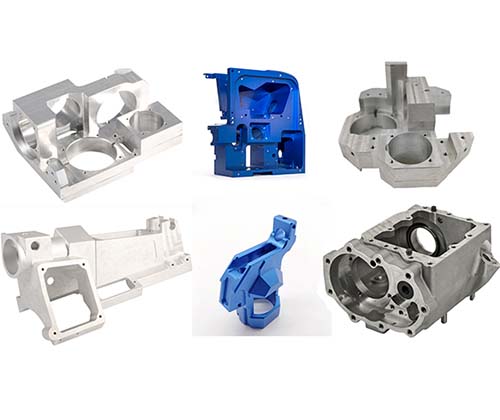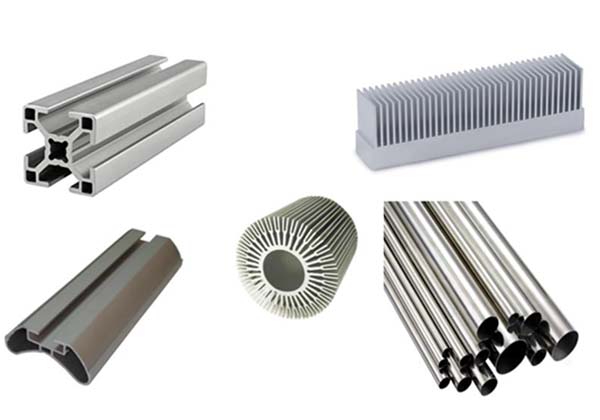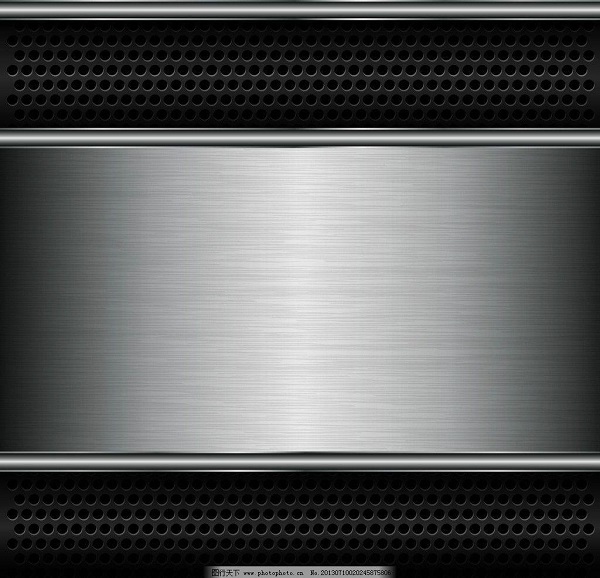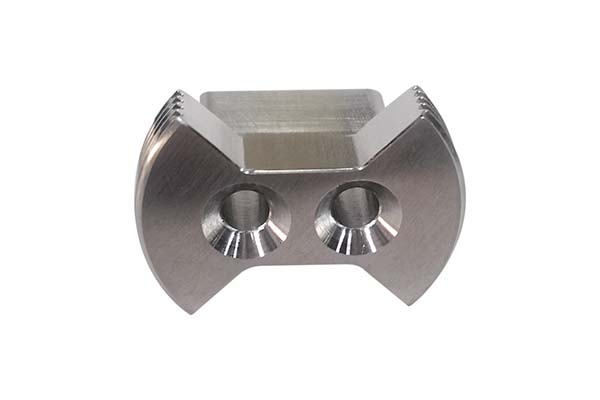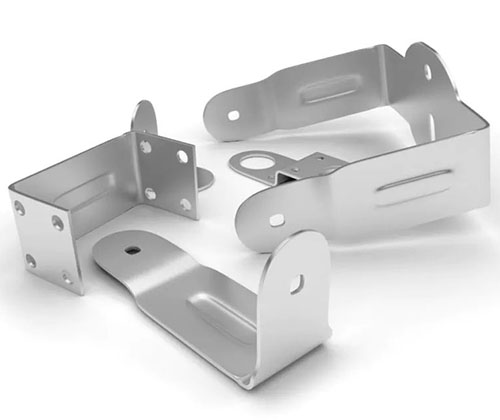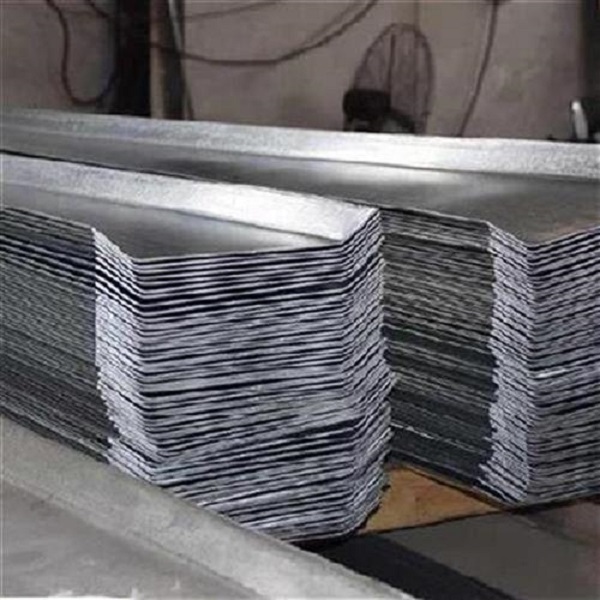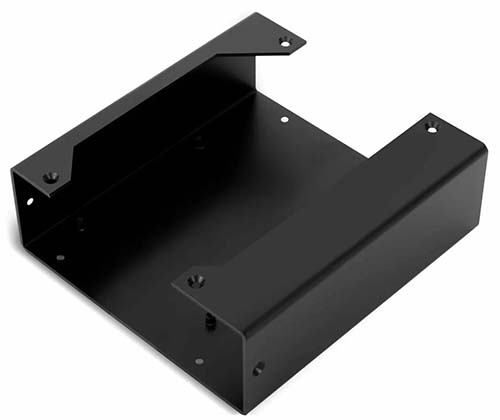Introduction
Definition and Basic Concept of Sheet Metal
Sheet metal is metal that has been formed into thin, flat pieces through an industrial process. It is one of the fundamental forms in metalworking, and its versatility makes it an essential material in countless industries. The thickness of sheet metal can vary; extremely thin sheets are often referred to as foil or leaf, while pieces thicker than 6mm (0.25in) are usually considered plates.
This material comes in a wide range of metals, such as steel, aluminum, copper, and stainless steel, each with its own unique properties. For example, steel sheet metal is known for its high strength and relatively low cost, making it popular in the automotive and construction industries. Aluminum sheet metal, on the other hand, is lightweight and corrosion - resistant, which makes it ideal for aerospace applications and outdoor products.
Sheet metal serves as the raw material for a vast number of everyday objects. From the metal body of your car to the metal panels in your kitchen appliances, sheet metal is everywhere. Its malleability allows it to be cut, bent, and formed into complex shapes, which is why it plays such a crucial role in manufacturing. But how exactly is sheet metal processed? And what factors should be considered when choosing sheet metal for a specific project? Let's explore these questions in the following sections.
Characteristics of Sheet Metal
Physical Properties
Sheet metal has several distinct physical properties that make it suitable for a wide range of applications.
Strength: Strength is a crucial property. For instance, high - strength steel sheet metal can withstand significant forces without deforming or breaking. In the construction industry, steel sheet metal is used in the framework of buildings to bear the weight of the structure and resist external forces like wind and seismic activity. According to industry standards, high - strength low - alloy (HSLA) steel sheet metal can have a yield strength ranging from 345 to 690 MPa (megapascals), which is much higher than that of regular mild steel. This high strength allows for the construction of taller and more durable buildings.
Conductivity: Metals like copper and aluminum sheet metal are excellent conductors of electricity and heat. Copper sheet metal, with its high electrical conductivity of about 5.96×10⁷ S/m (siemens per meter) at 20°C, is widely used in electrical wiring and circuit boards. In heat exchangers, aluminum sheet metal is preferred due to its good thermal conductivity (around 237 W/(m·K) for pure aluminum). These applications rely on the ability of the sheet metal to transfer electricity or heat efficiently.
Density: The density of sheet metal varies depending on the type of metal. For example, the density of steel is approximately 7850 kg/m³, while aluminum has a much lower density of around 2700 kg/m³. This difference in density makes aluminum sheet metal ideal for applications where weight reduction is crucial, such as in aircraft manufacturing. In an airplane, using aluminum sheet metal for the body panels can significantly reduce the overall weight of the aircraft, leading to better fuel efficiency and performance.
Mechanical Properties
The mechanical properties of sheet metal play a vital role in both its processing and end - use applications.
Ductility: Ductility refers to the ability of sheet metal to be stretched or drawn into different shapes without fracturing. Copper sheet metal is highly ductile. It can be easily formed into wires, tubes, or complex shapes through processes like stamping and bending. During the stamping process of making copper - based electrical components, the ductility of the copper sheet metal allows it to be shaped into intricate forms to meet the requirements of the electrical device.
Hardness: Hardness determines how resistant a sheet metal is to indentation, scratching, or wear. Hardened steel sheet metal, for example, is used in the manufacturing of cutting tools and gears. The high hardness of the steel ensures that these components can maintain their shape and function even under high - stress and abrasive conditions. There are different scales to measure hardness, such as the Rockwell and Brinell scales. For hardened steel, the Rockwell hardness can be in the range of HRC 40 - 60, indicating its high resistance to deformation.
Toughness: Toughness is the ability of sheet metal to absorb energy and resist fracture under impact. In the automotive industry, steel sheet metal with high toughness is used for car bodies. When a car is involved in a collision, the tough sheet metal can absorb the impact energy, protecting the passengers inside. Materials like quenched and tempered steels are often chosen for their high toughness, which helps to prevent the car body from shattering upon impact.
Types of Sheet Metal
Steel Sheet Metal
Steel sheet metal comes in several varieties, each with its own set of characteristics and applications.
Cold - Rolled Steel Sheet Metal: Cold - rolled steel is produced by rolling steel at a temperature below its recrystallization temperature. This process results in a smoother surface finish and better dimensional accuracy compared to hot - rolled steel. It has a higher strength - to - weight ratio and is more ductile. Cold - rolled steel sheet metal is commonly used in the automotive industry for car body panels, as its smooth surface is ideal for painting and can be easily formed into complex shapes through stamping. For example, the outer body panels of most sedans are made from cold - rolled steel. In the appliance industry, it is used for manufacturing the bodies of refrigerators, washing machines, and other household appliances due to its formability and attractive appearance.
Hot - Rolled Steel Sheet Metal: Hot - rolled steel is rolled at high temperatures, above the recrystallization temperature of the steel. This makes the process more energy - efficient and allows for higher production rates. Hot - rolled steel sheet metal has a rougher surface texture and is generally less expensive than cold - rolled steel. It is often used in construction for applications such as structural supports, roof decks, and large - scale fabrication projects. For instance, in the construction of industrial buildings, hot - rolled steel sheets are used for making the framework and roofing materials because of their strength and cost - effectiveness.
Galvanized Steel Sheet Metal: Galvanized steel has a protective zinc coating applied to its surface. This coating provides excellent corrosion resistance, making it suitable for outdoor and wet environments. The zinc layer acts as a sacrificial anode, meaning it corrodes first to protect the underlying steel. Galvanized steel sheet metal is widely used in roofing, gutters, and outdoor signage. In areas with high humidity or near the coast, galvanized steel is the material of choice for these applications. For example, the roofs of many residential and commercial buildings in coastal areas are made of galvanized steel sheets to prevent rusting caused by salt - laden air.
Aluminum Sheet Metal
Aluminum sheet metal is known for its lightweight nature, with a density of approximately 2700 kg/m³, which is about one - third the density of steel. This makes it an ideal choice for applications where weight reduction is crucial, such as in the aerospace industry. In aircraft manufacturing, aluminum sheet metal is used for the fuselage, wings, and other components to reduce the overall weight of the aircraft, thereby improving fuel efficiency and performance.
It also has excellent corrosion - resistance due to the formation of a thin, self - healing oxide layer on its surface when exposed to air. This property makes it suitable for outdoor applications like aluminum siding for houses, outdoor furniture, and boat hulls. In the automotive industry, aluminum sheet metal is increasingly being used in car bodies to improve fuel economy without sacrificing safety. For example, some high - end cars use aluminum sheet metal for body panels to reduce weight and enhance acceleration and handling.
Copper Sheet Metal
Copper sheet metal has outstanding electrical conductivity, second only to silver among common metals, with a conductivity of about 5.96×10⁷ S/m at 20°C. This makes it indispensable in the electronics industry. It is used in the production of printed circuit boards (PCBs), electrical wires, and connectors. In PCBs, copper sheets are etched to form the conductive pathways that allow electrical signals to flow between components.
Copper also has good thermal conductivity, which makes it useful in heat - related applications. In the construction industry, copper sheet metal is used for roofing and gutters. Copper roofs not only provide excellent protection against the elements but also develop a unique patina over time, adding an aesthetically pleasing look to buildings. In addition, copper is used in heat exchangers, such as those in air - conditioning systems and refrigerators, to transfer heat efficiently.
Applications of Sheet Metal
In the Automotive Industry
Sheet metal is extensively used in the automotive industry. For example, the body shells of cars are mainly made of sheet metal. Cold - rolled steel sheet metal is commonly chosen for its excellent formability and surface quality. It can be precisely stamped into various complex shapes, such as the curved panels of the car body, which not only gives the car an aesthetically pleasing appearance but also contributes to its aerodynamic performance. A study shows that an optimized body shell design using high - strength sheet metal can reduce air resistance by up to 10%, improving fuel efficiency.
Engine components also often utilize sheet metal. Steel sheet metal is used to make engine manifolds. The high - temperature resistance and strength of steel ensure that the manifold can withstand the high - temperature and high - pressure exhaust gases from the engine, ensuring the normal operation of the engine. In addition, sheet metal is used in the production of car doors, hoods, and fenders. These parts need to have a certain strength to protect the safety of passengers in case of a collision. According to safety standards, car body sheet metal must be able to withstand a certain impact force to meet safety requirements, which is crucial for the safety of vehicle occupants.
In the Aerospace Industry
In the aerospace industry, sheet metal plays a vital role. Aircraft bodies and wings are primarily constructed using sheet metal, mainly aluminum sheet metal due to its lightweight and high - strength - to - weight ratio properties. For instance, the fuselage of a commercial airliner is made up of numerous aluminum sheet metal panels. These panels are carefully designed and assembled to form a strong and lightweight structure. The use of aluminum sheet metal reduces the weight of the aircraft, which in turn reduces fuel consumption. It is estimated that for every 10% reduction in aircraft weight, fuel consumption can be reduced by about 8 - 10%.
Wings also rely on sheet metal. The outer skin of the wing is made of sheet metal, which needs to withstand aerodynamic forces during flight, including lift and drag forces. The sheet metal used in wings must have high fatigue resistance to endure the continuous stress cycles during take - off, flight, and landing. Special alloys of aluminum sheet metal are often developed to meet these strict requirements. For example, some aerospace - grade aluminum alloys have a tensile strength of over 500 MPa, ensuring the structural integrity of the wings during the entire service life of the aircraft.
In the Construction Industry
Sheet metal has a wide range of applications in the construction industry. In roofing, galvanized steel sheet metal or aluminum sheet metal is often used. Galvanized steel sheets provide excellent corrosion resistance, making them suitable for long - term outdoor use. They can protect the building from rain, snow, and other weather conditions. Aluminum sheet metal roofing is popular for its lightweight nature, which reduces the load on the building structure. It is also easy to install and can be formed into various shapes to match different architectural styles.
For building facades, sheet metal can be used to create an aesthetically pleasing and durable exterior. Stainless - steel sheet metal is often chosen for its sleek appearance and high corrosion resistance. It can be used to make decorative panels, curtain walls, and window frames. In addition, sheet metal is used in the construction of doors and windows. Steel sheet metal doors are strong and secure, while aluminum sheet metal windows are lightweight and energy - efficient, as they can have better thermal insulation properties when combined with appropriate glazing materials. Overall, sheet metal in the construction industry not only contributes to the structural integrity of buildings but also enhances their visual appeal.
Sheet Metal Processing Techniques
Cutting
Cutting is the initial and crucial step in sheet metal processing, determining the basic shape and size of the final product. There are several common cutting methods for sheet metal:
- Laser Cutting: Laser cutting uses a high - power laser beam to melt or vaporize the metal along the cutting path. It offers extremely high precision, with a cutting tolerance that can reach ±0.1mm. For example, in the production of small and complex electronic components, laser - cut sheet metal parts can fit together perfectly. It can cut thin sheet metals of various materials, including steel, aluminum, and copper, with high - quality cut edges that require little post - processing. However, the equipment cost is relatively high, and the cutting speed for thick sheet metal is slow.
- Plasma Cutting: Plasma cutting creates a high - temperature plasma arc to melt and blow away the metal. It is suitable for cutting thick sheet metals, up to 100mm in some cases. In large - scale manufacturing, such as shipbuilding, plasma cutting is often used to cut thick steel plates. It has a relatively high cutting speed and can cut a wide range of metals, including stainless steel. But the cut surface is rougher compared to laser cutting, and the precision is around ±0.5mm.
- Mechanical Cutting: Mechanical cutting methods include shearing and punching. Shearing is commonly used for straight - line cutting of large - scale sheet metal. For example, in the construction of buildings, shearing machines are used to cut large sheets of steel for wall and roof components. Punching is suitable for creating holes or simple shapes in sheet metal. Mechanical cutting is cost - effective for large - volume production of simple - shaped parts. However, the cutting accuracy is relatively low, and it may cause burrs on the cut edges, which usually require additional deburring processes.
Bending
Bending is a process that changes the shape of sheet metal by applying force to create curves or angles.
- Bending Process: There are different bending techniques, such as press braking and roll bending. Press braking uses a die and punch to bend the sheet metal at a specific angle. It is suitable for creating sharp bends in small - to - medium - sized sheet metal parts. For example, in the production of metal boxes, press braking is used to form the sides and edges. Roll bending, on the other hand, uses three or more rolls to gradually bend the sheet metal into a cylindrical or curved shape. This method is often used in the manufacturing of pipes or curved panels.
- Controlling Bending Parameters: To meet the design requirements, it is essential to control the bending angle and radius accurately. The bending angle is usually determined by the design of the die in press braking or the adjustment of the rolls in roll bending. The bending radius is related to the thickness of the sheet metal and the bending force. For example, for a thinner sheet metal, a smaller bending radius can be achieved. In general, the minimum bending radius should be at least 1 - 2 times the thickness of the sheet metal to avoid cracking or wrinkling. Special lubricants or pre - heating may be used for materials with low ductility to improve the bending quality.
Welding
Welding is the process of joining two or more sheet metal parts together to form a complete structure.
- Welding Methods:
- Arc Welding: Arc welding uses an electric arc to heat and melt the metal at the joint. Shielded metal arc welding (SMAW) and gas metal arc welding (GMAW) are common types. SMAW is relatively simple and portable, suitable for on - site welding in construction projects. GMAW, also known as MIG welding, has a higher welding speed and better weld quality, often used in industrial manufacturing.
- Resistance Welding: Resistance welding passes an electric current through the metal parts at the joint. The resistance of the metal generates heat, melting and joining the parts. Spot welding, which is a type of resistance welding, is widely used in the automotive industry to join car body panels. It is fast and can create strong joints.
- Laser Welding: Laser welding uses a laser beam to heat and fuse the metal. It offers high - precision welding with a narrow heat - affected zone. In the aerospace industry, laser welding is used to join aluminum sheet metal parts of aircraft components, as it can minimize the impact on the material's properties and ensure high - strength joints.
- Impact of Welding Quality: The quality of welding directly affects the performance of the final product. A poor - quality weld may have defects such as porosity, cracks, or insufficient penetration. These defects can reduce the strength and integrity of the welded structure. For example, in a pressure - vessel made of welded sheet metal, a welding defect could lead to leakage or even explosion under high - pressure conditions. Therefore, strict quality control measures, such as non - destructive testing (NDT) methods like ultrasonic testing and radiographic testing, are often employed to ensure the welding quality.
Yigu Technology's Viewpoint
Yigu Technology's Opinion on Sheet Metal
As a non - standard plastic metal products custom supplier, Yigu Technology deeply understands the significance of sheet metal in the manufacturing industry. With years of experience in custom processing, we have dealt with various types of sheet metal, from common steel to special - alloy metals.
We recognize that each type of sheet metal has its unique properties, and our expertise lies in matching the right sheet metal to the specific requirements of our customers' projects. Whether it's the high - strength needs in industrial equipment or the aesthetic and corrosion - resistant demands in consumer products, we can provide tailored solutions. Our advanced processing techniques ensure that the sheet metal is transformed into high - quality products with precision and efficiency. From precise cutting to flawless welding, we pay attention to every detail to meet the strictest quality standards. Trust Yigu Technology for all your sheet metal custom - processing needs.
